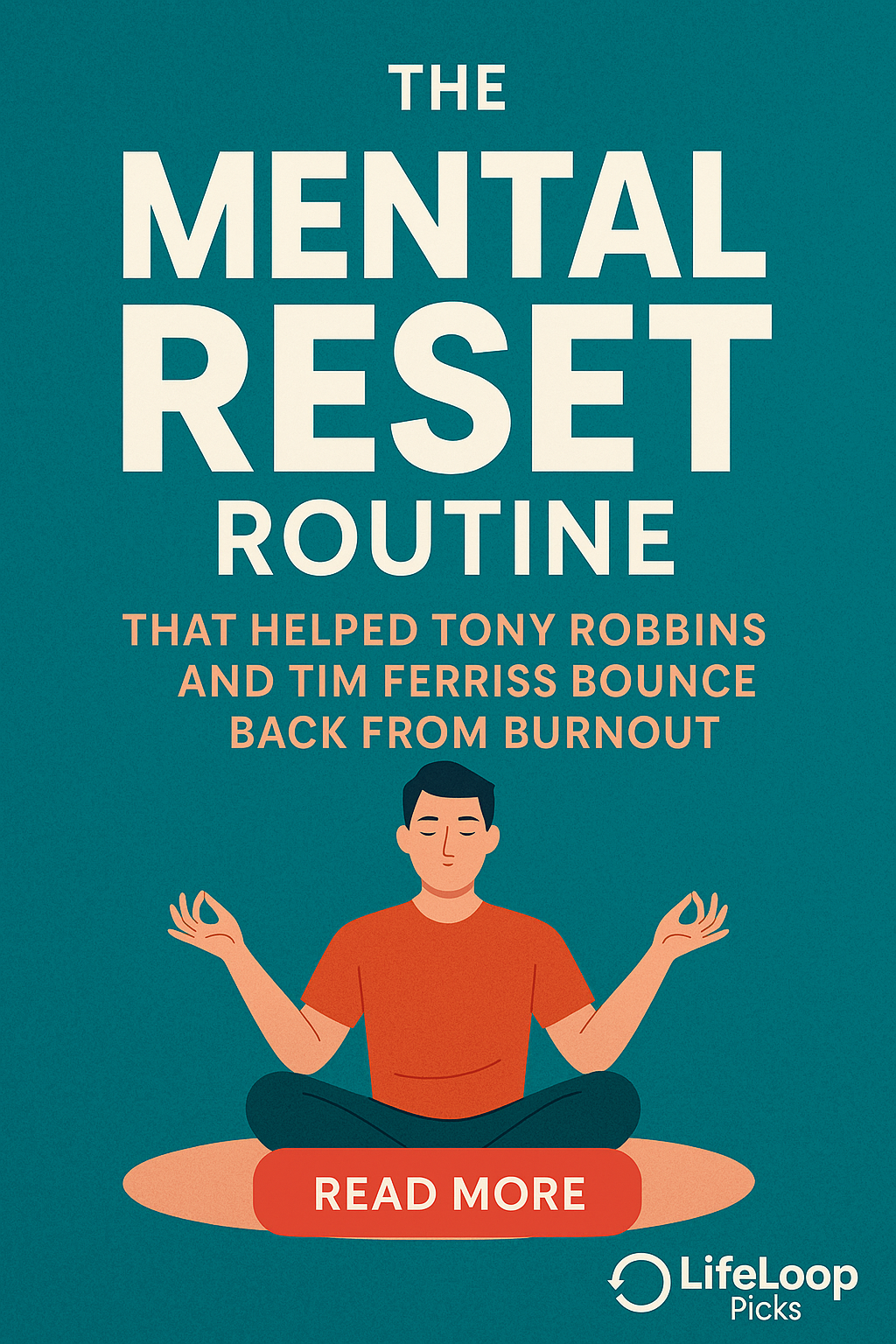Burnout isn’t just about being tired; it’s a state of chronic stress that leads to physical and emotional exhaustion, cynicism, and a reduced sense of accomplishment. Even the most driven individuals, like Tony Robbins and Tim Ferriss, have faced its debilitating grip. They’ve discovered that true high performance isn’t about relentless grind, but about strategic self-care and a deliberate “mental reset” routine that allows them to bounce back stronger.
The Silent Drain: How Burnout Takes Hold
Our brains aren’t wired for constant, high-stress output. When we push too hard for too long without adequate recovery, several things start to happen:
- Amygdala Enlargement: Chronic stress can enlarge the amygdala, the brain’s fear center, making us more reactive, irritable, and anxious.
- Prefrontal Cortex Thinning: The prefrontal cortex, responsible for decision-making, planning, and focus, can thin, impairing cognitive function and memory.
- Dopamine Dysregulation: Our “feel-good” dopamine system can get out of whack, leading to low motivation, anhedonia (inability to feel pleasure), and a sense of dread.
- Attention Residue & Decision Fatigue: As discussed in previous posts, constantly switching tasks and making endless small decisions drains our mental batteries.
Burnout isn’t a badge of honor; it’s a warning signal that your most valuable asset—your brain—is under attack.
The Science of the Reset: Why It Works
A mental reset routine isn’t just “taking a break.” It’s a series of deliberate actions designed to:
- Activate the Parasympathetic Nervous System: Shifting from “fight or flight” (sympathetic) to “rest and digest” (parasympathetic) calms the body and mind, reducing cortisol levels.
- Promote Neuroplasticity: Engaging in new or calming activities helps the brain build new, healthier neural pathways, counteracting the negative effects of stress.
- Clear Mental Clutter: Giving the mind space to process and release accumulated thoughts, worries, and incomplete tasks.
- Restore Cognitive Resources: Replenishing the finite mental energy needed for focus, creativity, and effective decision-making.
The Mental Reset Routine: Lessons from Robbins and Ferriss
While their specific routines vary, both Tony Robbins and Tim Ferriss emphasize similar core principles to prevent and recover from burnout. They prioritize practices that shift their mental and physical states, allowing for deep restoration and renewed focus.
Tony Robbins: The Power of State Change
Robbins’s philosophy hinges on the idea that emotion is created by motion. To change your mental state, you must first change your physical state and focus.
- Physiology First: Robbins is famous for his “priming” routine. This often involves:
- Movement: Jumping, power posing, or vigorous exercise to immediately shift energy. He emphasizes that a change in posture or movement can instantly alter your mood and confidence.
- Breathwork: Deep, controlled breathing exercises to oxygenate the brain and calm the nervous system.
- Science Link: Physical activity and specific breathing patterns directly influence neurotransmitter release (like dopamine and endorphins) and vagal nerve tone, promoting relaxation.
- Focus on Gratitude: Immediately after shifting his physiology, Robbins directs his focus to what he is grateful for, often envisioning desired outcomes.
- Science Link: Practicing gratitude has been shown to boost mood, reduce stress, and even improve sleep quality by shifting focus from threat to abundance.
- Strategic Language: He consciously chooses empowering language, reframing challenges as opportunities.
- Science Link: The words we use, especially in self-talk, shape our perception and emotional response. This is a core tenet of cognitive behavioral therapy.
Tim Ferriss: Deliberate Decompression & Optimization
Ferriss, known for “deconstructing” peak performance, focuses on systematic routines that optimize his mental and physical state for long-term sustainability. He often speaks to managing energy, not just time.
- Morning Rituals (Anchors): Before diving into work, Ferriss typically engages in a series of “anchoring” activities:
- Cold Exposure: Cold showers or plunges to “wake up” the nervous system, reduce inflammation, and provide a mental reset.
- Meditation/Mindfulness: Short periods of meditation to clear the mind, improve focus, and reduce reactivity.
- Journaling: A “brain dump” to offload anxieties, plan the day, and practice gratitude.
- Science Link: Cold exposure can increase dopamine and norepinephrine. Meditation alters brain waves and reduces amygdala activity. Journaling reduces cognitive load and promotes emotional processing.
- Strategic Breaks & “Un-Scheduling”: Ferriss advocates for “slow productivity” and building in recovery.
- Micro-Resets: Short breaks (e.g., 5-17 minutes) throughout the day to stretch, walk, or simply disconnect.
- Time Blocking for Recovery: Deliberately scheduling “off” time, not just work time.
- Science Link: Regular breaks prevent attention residue, reduce mental fatigue, and allow for diffused mode thinking, fostering creativity.
- Digital Boundaries: Ferriss is disciplined about managing his digital inputs, avoiding app-hopping and setting clear boundaries around notifications and email.
- Science Link: This directly combats cognitive overload and decision fatigue, reserving mental bandwidth for deep work.
Implementing Your Own Mental Reset Routine
You don’t need a billionaire’s budget or a guru’s stage to benefit from these strategies. The key is consistency and personalization.
- Identify Your Burnout Triggers: What specifically drains you? Excessive meetings, constant notifications, lack of clear goals, poor sleep?
- Start Small, Be Consistent: Pick one or two habits to begin. A 5-minute gratitude journal in the morning, a 10-minute walk at lunch, or cutting off screen time 30 minutes before bed are great starts.
- Prioritize Physiology: Integrate movement and breathwork. Even a few deep breaths before a tough meeting can make a difference.
- Create “Sacred” Time: Designate periods (morning, midday, evening) where you are unreachable and fully focused on your reset activity.
- Listen to Your Body & Mind: Pay attention to how different activities affect you. Your routine is unique.
A mental reset routine isn’t a luxury; it’s a vital component of sustainable high performance. By deliberately building in moments of recovery and conscious state change, you can navigate the pressures of modern business, bounce back from setbacks, and continue to operate at your peak without sacrificing your well-being.
What’s one small mental reset you can commit to starting today?

